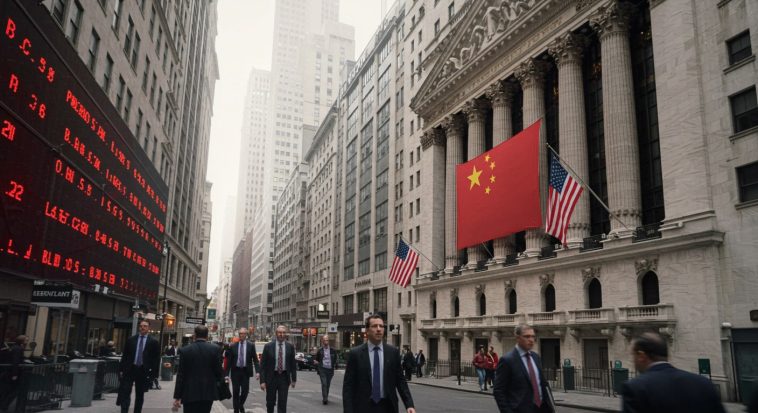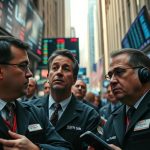As June begins, Wall Street has started off on a shaky note, feeling the pressure from renewed trade tensions between the U.S. and China. After a strong rally in the spring, the mood took a downturn on Monday as both nations exchanged sharp words, leading to a drop in investor confidence. The Dow Jones Industrial Average fell by 180 points, or about 0.4%. The S&P 500 was also down, slipping 0.2%, while the Nasdaq Composite managed to hold steady, just barely staying above water.
The latest wave of tension kicked off when Chinese officials denied President Trump’s claim that they had violated a previous agreement made under the Geneva framework regarding tariffs. Instead, they pointed fingers back at the U.S., alleging that America had backed out on several important aspects of that agreement. Rachel Kim, a senior strategist at Polaris Asset Management, captured the mood when she noted, “The atmosphere around trade talks has soured again—and that’s bad news for global stability. Investors were just beginning to price in smoother diplomacy. Now, it’s two steps back.”
This spat came on the heels of Trump’s warning on Friday that he might double the tariffs on steel and aluminum imports to 50%. Just when it seemed like U.S. businesses had a small legal win, the higher court stepped back and reinstated the tariffs while they awaited further legal evaluation.
In the midst of all this, the U.S. dollar dropped, signaling rising concerns about inflation due to trade issues and the potential for a slowdown in global growth. Gold prices, on the other hand, climbed as investors moved their money into more secure assets. Adding to the anxiety was the news that Ukraine had launched drone attacks deeper into Russian territory, raising fears of escalating conflict in Eastern Europe. David Lang, chief economist at Fenwick Global, pointed out that “Markets hate uncertainty.” When you combine trade tensions with geopolitical issues, people often rush to safety, like a stampede.
This rough start to June is a stark contrast to the strong performance seen in May. The S&P 500 jumped more than 6% last month, marking its best performance since November 2023 and the strongest May in over 30 years. But now, enthusiasm appears to be waning as investors prepare for a busy week ahead. The nonfarm payrolls report coming out Friday is set to take center stage, providing crucial insight into how the job market is holding up amid persistent inflation and unpredictable economic policies.
On a more sobering note, new data from the Institute for Supply Management indicated that U.S. manufacturing activity has contracted for another month, with import levels hitting their lowest point since the 2009 recession.
While trade tensions usually ignite inflation worries, Federal Reserve officials don’t seem overly concerned—at least for now. Fed Governor Christopher Waller mentioned that any inflation spikes linked to tariffs would likely be short-lived, hinting that interest rate cuts by 2025 could be possible.
This is a reassuring message for Wall Street. Investors will be paying close attention to upcoming comments from Fed Chair Jerome Powell and other officials later this week. Macro strategist Anna Morales at Insight Capital mentioned that if Powell aligns with Waller’s tone, the market might feel a bit more at ease. However, any uncertainty in his statements could lead to volatility returning swiftly.
As the earnings season comes to an end, a few high-profile companies are still set to report their results this week, including cybersecurity firm CrowdStrike, chipmaker Broadcom, the e-signature service DocuSign, and athletic wear giant Lululemon. While corporate earnings have mostly met expectations so far, the narrative in the market is shifting. It’s increasingly about watching what central banks and trade negotiators will do next, rather than just focusing on the individual performances of companies.



